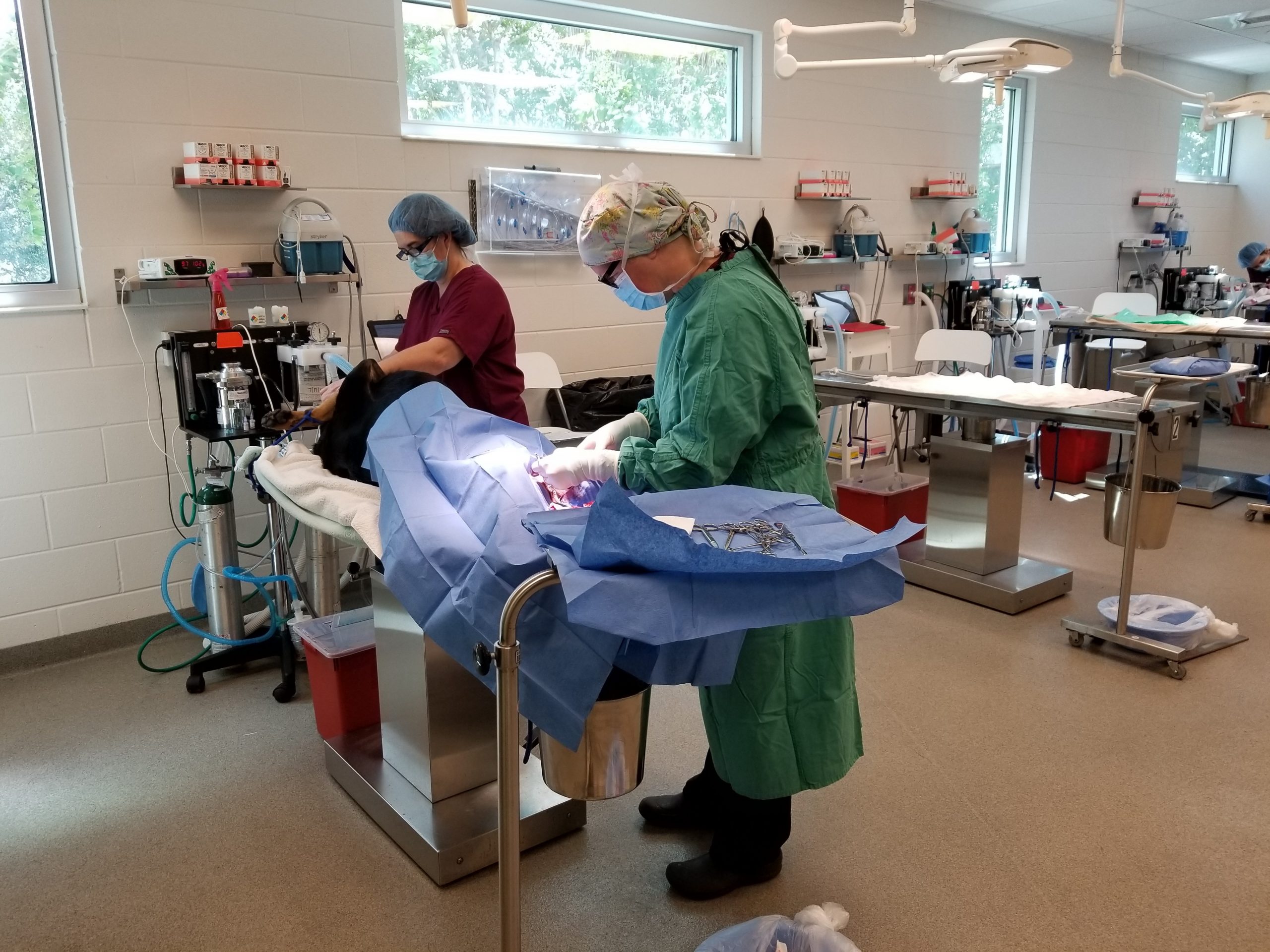Module 4: The Case of the Spay-Neuter Skeptic
Sterilization in the Shelter Environment
At what point during an animal’s shelter stay should spay-neuter be performed? Remember that each individual animal benefits from the shortest possible length of stay (LOS). Additionally, a shorter LOS reduces shelter crowding and all of its negative consequences. Surgery should be timed so as to avoid extending any animal’s stay in the shelter.
Historically, some shelters have waited until the animal was adopted before scheduling surgery. This was particularly true in shelters with low live-outcome rates, because investing in surgery for animals that would not be placed was not a good use of resources. However, delaying surgery in shelters with high live-outcome rates can contribute to bottlenecks that add unnecessary animal care days. For prompt placement, the optimal time to perform spay-neuter is as soon as possible after admission to the shelter so that animals can go home at the time of adoption.
Most shelters are required by law or internal policy to assure that all of its animals are sterilized. However, there are several ways to meet this obligation. If they have in-house surgery capacity, they can schedule spay-neuter for the first day the animal becomes the property of the shelter (often the day of intake for owner-surrendered animals or after a short holding period in the case of stray animals). Although not ideal, sterilization vouchers can be issued if the shelter cannot provide prompt surgery. These vouchers might be redeemed at a later time when the shelter has surgery appointments available or at a private veterinary clinic. Rigorous follow-up on animals released intact is required to assure that the surgery is not delayed. Shelters that do not have adequate in-house surgery services can develop agreements with local veterinary practitioners to assure that newly adopted pets are promptly sterilized. In one example, a rural shelter with no on-site veterinarian transports newly adopted pets to a private clinic for surgery. Then the adopter picks up their new family member from the clinic when the surgery has been completed. This is a great way for the new adopter to begin a relationship with a local practitioner to provide ongoing care.

IDENTIFICATION OF STERILIZED cATS AND DOGS

Reliable identification of previously sterilized animals can be challenging for many reasons, justifying the need for a single standard indicator of sterilization. Minimally invasive spay-neuter surgical techniques may result in negligible scarring, and observable scars may be indistinguishable from those due to other procedures (e.g., cesarean-sections) or nonsurgical trauma. Males lacking scrotal testicles may be cryptorchid rather than castrated. Additionally, some animals such as feral cats cannot be safely examined prior to sedation. Approximately 2% of the cats and dogs presented to spay-neuter clinics have been previously sterilized, unbeknownst to their caregivers. At a minimum these needless veterinary visits waste professional time and valuable surgery slots. At worst, animals are harmed by enduring unnecessary anesthesia and/or exploratory surgery, with its attendant morbidity and mortality.
To avoid this, the Association of Shelter Veterinarians’ 2016 Veterinary Medical Care Guidelines for Spay-Neuter Programs “recommends the use of a simple green linear tattoo to identify all neutered pet animals and ear-tipping to identify all community cats.” Veterinarians with the highest spay-neuter caseload, and presumably the highest risk of encountering previously sterilized animals, are more likely to utilize sterilization indicators and to have higher levels of satisfaction with their use than veterinarians who performed fewer spay-neuter surgeries. For female cats, female dogs, and male cats, the recommended tattoo site is on the ventral abdomen just caudal to the umbilicus, even if a flank approach to ovariohysterectomy is used. For male dogs, the recommended tattoo location is parallel to the prepuce in the prescrotal region. Such placement can easily be seen during physical examination or when hair is clipped in preparation for surgery. It is in the interest of all cats and dogs to receive standardized sterilization indicators at the time of surgery, regardless of their ownership status or where the surgery is performed.
Non-Surgical Sterilization
Maybe one day, there will no longer be a need for mass surgical sterilization campaigns to prevent unwanted litters. While there are no approved contraceptive products currently in the US, research is ongoing for non-surgical options. At the forefront of this effort the Alliance for Contraception in Cats and Dogs. The Michelson Prize and Grants program has incentivized research into nonsurgical alternatives for population control with $50 million in research grants and an as yet unclaimed $25 million prize to the researcher who develops a permanent, single-dose contraceptive for female and male cats and dogs.

